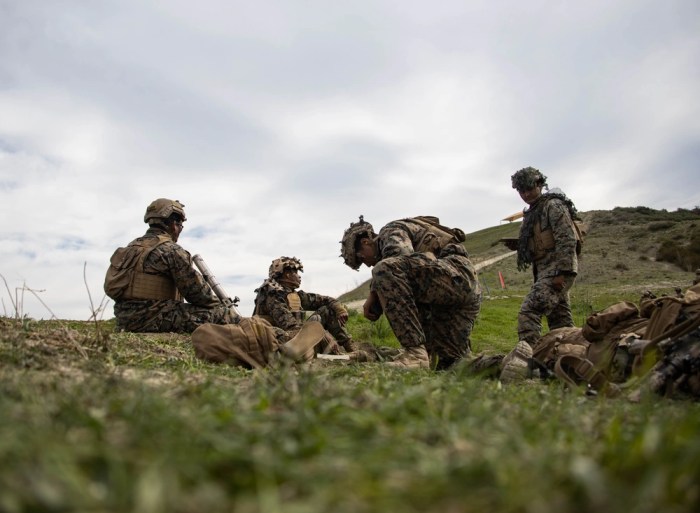Risk management for small unit leaders pre test – Risk management is a critical aspect of small unit leadership, as it enables leaders to identify, assess, and mitigate potential risks to ensure the safety and success of their teams. This pre-test is designed to assess your understanding of the fundamental principles and practices of risk management for small unit leaders.
Throughout this pre-test, you will encounter questions that cover various aspects of risk management, including risk identification, assessment, mitigation, communication, and training. By completing this pre-test, you will gain a comprehensive understanding of the importance of risk management and its application in small unit operations.
Risk Management Overview

Risk management is a crucial aspect of military operations, particularly for small unit leaders. It involves identifying, assessing, and mitigating potential risks to enhance mission success and protect personnel.
Implementing risk management strategies offers several benefits, including improved decision-making, reduced uncertainty, enhanced situational awareness, and increased confidence in operations.
However, risk management also presents challenges, such as time constraints, resource limitations, and the difficulty of accurately predicting future events.
Risk Identification and Assessment
Identifying potential risks is essential for effective risk management. Small unit leaders can utilize various methods, such as conducting risk assessments, consulting with subject matter experts, and leveraging historical data and lessons learned.
Once risks are identified, they should be assessed based on their likelihood and severity. Risk assessment techniques include qualitative analysis, quantitative analysis, and scenario planning.
Risk Mitigation and Contingency Planning
Risk mitigation involves implementing strategies to reduce the likelihood or impact of identified risks. Common risk mitigation strategies include avoidance, control, and transfer.
Contingency planning is a critical aspect of risk management that involves developing plans and procedures to respond to unexpected events or risk occurrences. Contingency plans should be tailored to specific risks and provide clear guidance on actions to be taken.
Risk Communication and Training, Risk management for small unit leaders pre test
Effective risk communication is essential for ensuring that all members of the unit understand the identified risks and their implications. Clear and concise communication channels should be established.
Ongoing training is crucial for enhancing risk management capabilities. Training should focus on risk identification, assessment, mitigation, and contingency planning. Regular exercises and drills can also improve risk management proficiency.
FAQ: Risk Management For Small Unit Leaders Pre Test
What is the primary goal of risk management for small unit leaders?
The primary goal of risk management for small unit leaders is to identify, assess, and mitigate potential risks to ensure the safety, efficiency, and effectiveness of their units.
What are some common challenges in implementing risk management strategies for small unit leaders?
Some common challenges include limited resources, time constraints, and the need to balance risk management with operational requirements.
What is the importance of contingency planning in risk management?
Contingency planning is crucial as it provides a framework for responding to unexpected events and minimizing their impact on the unit’s mission.
How can small unit leaders effectively communicate risk information within their units?
Effective risk communication involves using clear and concise language, providing timely updates, and ensuring that all team members understand their roles and responsibilities in managing risks.


